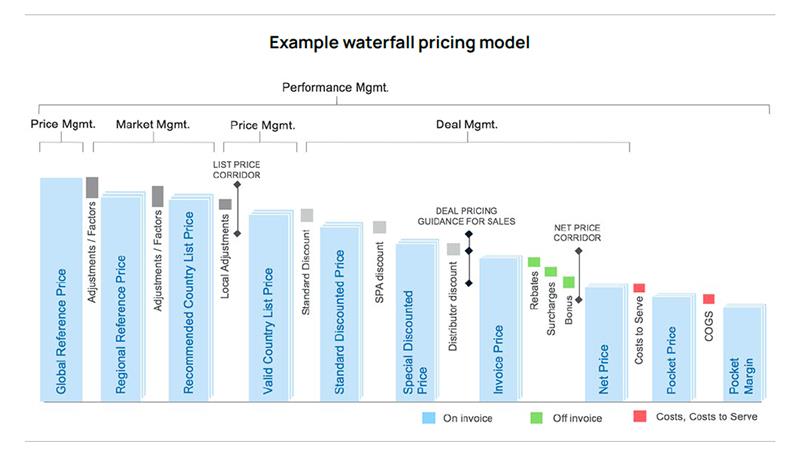
Price control – when done right – can lead to greater profitability and growth.
And to do it right, you need accurate, actionable data to inform your policy decisions, plus the necessary frameworks and automation to execute them effectively.
Here are 5 simple steps you can take to improve your price control strategy and maximize profitability:
1. Reconsider Your Pricing-Related Data
Pricing-related information is often scattered across the company, and it’s easy for crucial details to get lost or overlooked. Many companies already consolidate transaction data, but there are many other factors that influence pricing decisions that should be tracked, such as customer attributes, seasonal information, and regional data.
Rethink what would count as pricing information with this lens, then collect that data from across the company and organize it all in one system for easy access. It’s best to use a solution that is specifically designed to assess the data and make suggestions for inclusion and consideration.
2. Organize Your Pricing Information into a Waterfall
Consolidating price-related info for easy access in a single system is a necessary first step. But what’s more important is how that data is organized, visualized, and ultimately utilized.
The best way to organize pricing data is around the idea of a waterfall. There is a cascade of influences that impact the standard list price of a product and how it is successively adjusted to meet the customer’s negotiated price, sometimes called the net or “pocket price.”

It’s crucial to define the various steps along that waterfall that influence ultimate price points, including decisions, approval processes, and other variables. This waterfall structure provides better clarity – it helps you understand and explain what a price means, and offer more visibility into the process of how a specific price was developed for a specific customer. Ideally, the waterfall structure can be varied to reflect specific business unit needs, but still roll up into a coherent view of the overall performance across the entire organization.
3. Establish a Common Lexicon for Discussing Pricing Decisions
Most enterprise companies have diverse teams distributed across various business units and regions, and pricing policies and objectives can vary from unit to unit. As you reassess your strategy and implement new price control and margin optimization projects, check in to make sure everyone is on the same page.
Pricing control is a precise exercise, and that starts with precise language. To avoid miscommunications and delays, establish a common lexicon across all business units.
Without an agreed-upon lexicon, data accuracy can diminish because different teams are using different terms like “regional price” and “list price” to describe the same thing, and the ensuring confusion will slow things down across the board.
To avoid miscommunications and delays, establish a common lexicon across all business units.
4. Use Artificial Intelligence and Automation to Identify Opportunities and Risks
Having pricing-related data readily available is a great start. But you also need an efficient way of analyzing it to make quick, informed decisions. That can get tricky with enterprise companies that often have diverse, multilevel teams working across the globe. Organizing a team Zoom call that works for everyone spread across 24 time zones can be next to impossible – gathering and analyzing data from across the entire company to provide granular insights is an even more daunting task to coordinate and synchronize.
The best remedies for this are good analytics algorithms, artificial intelligence, and automation – specifically built for pricing optimization and management. You don’t want to bring these capabilities together manually. There are many pricing tools, including Vendavo solutions, that are designed for B2B pricing control and optimization.
5. Don’t Start from Scratch
Remember, you don’t have to start from scratch – that would be inefficient and less effective. There are already tried-and-true best practices for developing and executing a successful pricing strategy, with a variety of literature, webinars, and case studies where you can get a play-by-play on where to start and how to do it. This case study from a 1992 Harvard Business Review explains a simple price waterfall, and cites work on B2B pricing as far back as 1967!
Having a playbook to follow provides more structure and support for your data organization and analysis, so you can create a stronger pricing strategy and ensure more profitability.
Vendavo solutions offer support across all of these steps. Discover how Vendavo can streamline the entire price control process for your organization. Get in touch with us and take control of your pricing today.